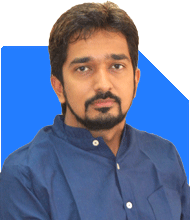Should I Change My 29-Year-Old Investment Strategy With 10k in HDFC Midcap, 5k in Mirae Asset Large & Midcap, 5k in SBI Contra Fund, 2k in ICICI Prudential Small Cap, 2k in ICICI Prudential Retirement Fund, 2k in Aditya Birla Equity Fund, and 5k in SBI Magnum Midcap?
Ramalingam Kalirajan |10872 Answers |Ask -Follow
Mutual Funds, Financial Planning Expert - Answered on Jul 30, 2024
He has an MBA in finance from the University of Madras and is a certified financial planner.
He is the director and chief financial planner at Holistic Investment, a Chennai-based firm that offers financial planning and wealth management advice.... more

I'm 29 investing 10k in hdfc midcap, 5k in mirae asset large and midcap, 5k in sbi contra fund,2k in icici prudential small cap,2 k in icici prudential retirement fund,2k in aditya birla euity fund,5k in sbi magnum midcap
Current Allocation
Rs. 10,000 in HDFC Midcap
Rs. 5,000 in Mirae Asset Large and Midcap
Rs. 5,000 in SBI Contra Fund
Rs. 2,000 in ICICI Prudential Small Cap
Rs. 2,000 in ICICI Prudential Retirement Fund
Rs. 2,000 in Aditya Birla Equity Fund
Rs. 5,000 in SBI Magnum Midcap
Portfolio Assessment
Diversification
Your portfolio is well-diversified across various fund categories. This reduces risk and captures growth across sectors.
Midcap Focus
You have a significant investment in mid-cap funds. Mid-cap funds offer high growth potential but can be volatile. Ensure you are comfortable with this risk level.
Small Cap and Contra Funds
Small-cap and contra funds add diversity. They can provide high returns, but with increased risk. Monitor these funds closely.
Retirement Fund
Investing in a retirement fund is wise. It ensures long-term wealth creation for your future.
Insight on Direct Funds
Disadvantages of Direct Funds
Direct funds may seem cost-effective due to lower expense ratios. However, they lack professional guidance. Certified Financial Planners (CFPs) provide valuable insights, helping you make informed decisions. Regular funds with CFP advice can optimize your investment strategy.
Benefits of Regular Funds
Professional advice ensures better fund selection.
CFPs monitor and rebalance your portfolio.
They offer personalized financial planning.
Regular funds provide peace of mind and expert management.
Suggestions for Improvement
Review Midcap Exposure
Consider balancing your portfolio by reducing mid-cap exposure. Diversify into large-cap and multi-cap funds for stability.
Increase SIP in Large-Cap Funds
Large-cap funds offer stability and steady returns. Increasing SIP in these funds can enhance your portfolio's resilience.
Monitor and Rebalance
Regularly monitor and rebalance your portfolio. This ensures alignment with your financial goals and risk tolerance.
Benefits of Actively Managed Funds
Actively managed funds outperform index funds. Fund managers actively select stocks, aiming for higher returns. These funds can adapt to market changes, offering better performance.
Disadvantages of Index Funds
Index funds replicate market indices, offering average returns.
They lack flexibility in changing market conditions.
Actively managed funds provide opportunities for higher gains.
Additional Recommendations
Emergency Fund
Ensure you have an adequate emergency fund. It should cover 6-12 months of expenses. This provides financial security during unforeseen events.
Health and Term Insurance
Review your health and term insurance coverage. Adequate insurance protects your family and ensures peace of mind.
Long-Term Goals
Align your investments with long-term goals. Define specific financial targets and create a roadmap to achieve them.
Final Insights
Your current investment strategy is commendable. It reflects a balanced and diversified approach. Regular monitoring and rebalancing are key to maintaining a healthy portfolio. Consider seeking advice from a Certified Financial Planner to optimize your investments. This ensures you are on track to achieve your financial goals.
Best Regards,
K. Ramalingam, MBA, CFP,
Chief Financial Planner,
www.holisticinvestment.in
You may like to see similar questions and answers below
Dev Ashish | Answer |Ask -Follow
MF Expert, Financial Planner - Answered on Jun 13, 2023
Ramalingam Kalirajan |10872 Answers |Ask -Follow
Mutual Funds, Financial Planning Expert - Answered on Apr 10, 2024
Ramalingam Kalirajan |10872 Answers |Ask -Follow
Mutual Funds, Financial Planning Expert - Answered on Apr 23, 2024
Ramalingam Kalirajan |10872 Answers |Ask -Follow
Mutual Funds, Financial Planning Expert - Answered on Dec 25, 2024
Ramalingam Kalirajan |10872 Answers |Ask -Follow
Mutual Funds, Financial Planning Expert - Answered on Jul 28, 2025
Radheshyam Zanwar |6735 Answers |Ask -Follow
MHT-CET, IIT-JEE, NEET-UG Expert - Answered on Dec 06, 2025
Dr Nagarajan J S K |2576 Answers |Ask -Follow
NEET, Medical, Pharmacy Careers - Answered on Dec 06, 2025
Mihir Tanna |1090 Answers |Ask -Follow
Tax Expert - Answered on Dec 06, 2025
Ramalingam Kalirajan |10872 Answers |Ask -Follow
Mutual Funds, Financial Planning Expert - Answered on Dec 06, 2025
Radheshyam Zanwar |6735 Answers |Ask -Follow
MHT-CET, IIT-JEE, NEET-UG Expert - Answered on Dec 06, 2025
Radheshyam Zanwar |6735 Answers |Ask -Follow
MHT-CET, IIT-JEE, NEET-UG Expert - Answered on Dec 06, 2025
Radheshyam Zanwar |6735 Answers |Ask -Follow
MHT-CET, IIT-JEE, NEET-UG Expert - Answered on Dec 06, 2025
Dr Dipankar Dutta |1837 Answers |Ask -Follow
Tech Careers and Skill Development Expert - Answered on Dec 05, 2025
Dr Shyam Jamalabad |108 Answers |Ask -Follow
Dentist - Answered on Dec 05, 2025
Dr Shyam Jamalabad |108 Answers |Ask -Follow
Dentist - Answered on Dec 05, 2025



























